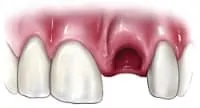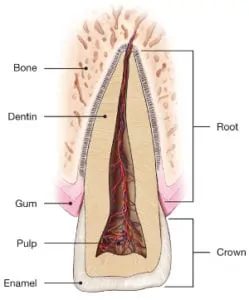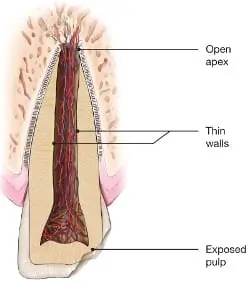Chipped, Bumped & Dislodged Teeth
Unfortunately, accidents happen to both children and adults. In these cases, dental injuries can be minimal and inconsequential, or they can be severe requiring treatment. Some dental injuries can cause the gums to bleed, also known as a concussion; this is the least significant dental injury. Most often, treatment is not required but the tooth should be monitored. However, other dental injuries can cause the tooth to chip or break. Sometimes a break can involve the nerve as well. These dental injuries should have a consultation with a dental professional. Sometimes the tooth can be glued back together and other times, a root canal might be necessary. Teeth can also be pushed sideways, downwards or upwards – back into their sockets; these are known as luxation injuries. Your endodontist or general dentist may reposition and stabilize your tooth. Root canal treatment is usually started within a few weeks of a dental injury and a special antibacterial medication, such as calcium hydroxide, will be placed inside the tooth. Eventually, a permanent root canal filling will be placed.

Sometimes a tooth may be pushed partially out of the socket (also known as extrusion). In this case, your endodontist or general dentist may reposition and stabilize your tooth. If the pulp (aka the nerve) remains healthy, then no other treatment is necessary. Sometimes, if the pulp becomes damaged or infected, then root canal treatment will be required. If a dental injury does not receive proper treatment, different complications can arise. These complications may include infection of the tooth, root system or surrounding tissue, inadequate hygiene due to an inability to properly clean the dislodged tooth and the gums, and loss of the tooth.
Avulsed Teeth
If an injury causes a tooth to be completely knocked out of your mouth, it is important that you are treated immediately by a dental professional! If this happens to you, keep the tooth moist. If possible, put it back into the socket. A tooth can be saved if it remains moist. We highly recommend that you put the tooth in cold milk, if possible. A Ziploc bag of saliva would be the next best alternative to cold milk.

Your Endodontist may start root canal treatment based upon several factors: the stage of root development, the length of time the tooth was out of your mouth and the way the tooth was stored; all of these may influence the type of treatment you receive, as well as the long-term prognosis of the tooth.
Injuries in Children
Because oftentimes a child’s tooth might not be fully developed (with root closure), an injured child’s tooth may need one of the following procedures to improve the chances of saving the tooth:
Your Endodontist may start root canal treatment based upon several factors: the stage of root development, the length of time the tooth was out of your mouth and the way the tooth was stored; all of these may influence the type of treatment you receive, as well as the long-term prognosis of the tooth.
Apexogenesis
This procedure encourages the root to continue development to become stronger as the pulp heals. The undamaged nerve/pulp tissue is covered with medication to encourage root growth. The tip of the root (apex) will continue to close as the child gets older. In turn, the walls of the root canal will thicken. If the pulp heals, no additional treatment will be necessary. The more mature the root becomes, the better the chance of saving the tooth.

Apexification
In this case, the unhealthy pulp must be removed. The doctor places medication into the root’s end to help a hard tissue form near the root tip. This hardened tissue provides a barrier for the root canal filling. At this point, the root canal walls will not continue to develop, and although the tooth remains susceptible to fractures, most often, the tooth can be saved and can function normally.

In both cases, it is important to have the tooth properly restored by your dentist.